Homepage / News Details
Notes on the use of calcium hypochlorite
- Categroy:News
- Author:
- Origin:
- Release Time:2021-11-24 15:09
- Views:
【Summary】Notes on the use of calcium hypochlorite
Notes on the use of calcium hypochlorite
【Summary】Notes on the use of calcium hypochlorite
- Categroy:News
- Author:
- Origin:
- Release Time:2021-11-24 15:09
- Views:

Notes on the use of calcium hypochlorite
Hazard Overview
Health hazards: the dust can irritate the conjunctiva and respiratory tract and cause damage to teeth. Skin contact can cause moderate to severe skin damage.
Flammability hazard: this product is combustion-supporting and irritating.
First aid measures
Skin contact: immediately take off contaminated clothing, rinse skin thoroughly with soapy water and clean water. Go to a doctor.
Eye contact: lift eyelid, rinse with running water or normal saline. Go to a doctor.
Inhalation: Remove quickly from the scene to fresh air. Keep airway open. If breathing is difficult, give oxygen. If breathing stops, give artificial respiration immediately. Go to a doctor.
Eat: drink enough warm water to induce vomiting. Go to a doctor.
Fire control measures
Harmful combustion products: chloride, calcium oxide.
Fire fighting method: fire fighters should wear gas masks and full-body fire fighting clothes to fight fire upwind.
Fire extinguishing agent: straight running water, mist water, sand.
Leakage emergency treatment
Emergency treatment: isolate contaminated areas and restrict access. It is recommended that emergency personnel wear dust masks (full hoods) and protective clothing. Do not contact the spill directly. Do not let the leakage and reducing agent, organic matter, combustible or metal powder contact.
Small amount of leakage: avoid dust, use clean shovel to collect in a dry, clean, covered container, transfer to a safe place.
Large amount of leakage: covered with plastic cloth and canvas. It is then collected for recycling or transported to a waste disposal site for disposal.
Operation treatment and storage
Operation precautions: closed operation, strengthen ventilation. Operators must be specially trained and strictly abide by the operating procedures. It is recommended that the operator wear a hood-type electric air supply filter dust respirator, a rubber tape anti-toxic suit, and neoprene gloves. Keep away from fire and heat source. No smoking in workplace. Keep away from flammable and combustible materials. Avoid dust generation. Avoid contact with reducing agents and acids. Handling should be carried lightly to prevent damage to packaging and containers. Vibration, impact and friction are prohibited. Equipped with the corresponding variety and quantity of fire fighting equipment and leakage emergency treatment equipment. Empty containers may contain hazardous materials.
Storage precautions: Store in a cool and ventilated warehouse. Keep away from fire and heat source. The storage temperature shall not exceed 30℃, and the relative humidity shall not exceed 80%. Packing should be sealed and out of contact with air. It should be stored separately with reducing agent, acid, combustible materials, etc., and should not be mixed. Do not store in large quantities or for long periods. The storage area shall be equipped with suitable materials to accommodate leaks.
Releate News

Time of issue : 2024-04-22 08:56:03

Time of issue : 2024-04-15 16:52:27

Time of issue : 2024-04-09 10:13:04
CONTACT US
PRODUCTS
CALCIUM HYPOCHLORITE
TCCA
SDIC
BCDMH
FEEDBACK
© 1999-2018 北京网站建设有限公司 Copyright © 2012-2022 All Rights Reserved Powered by www.300.cn 冀ICP备12012949号 津公网安备 12010302002173号 Seo tag

